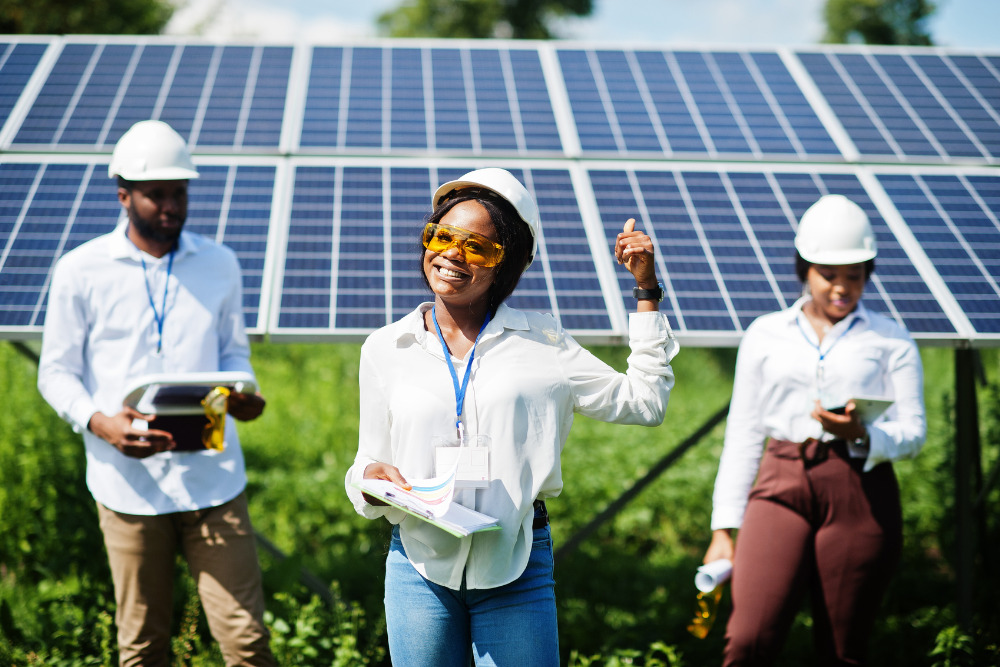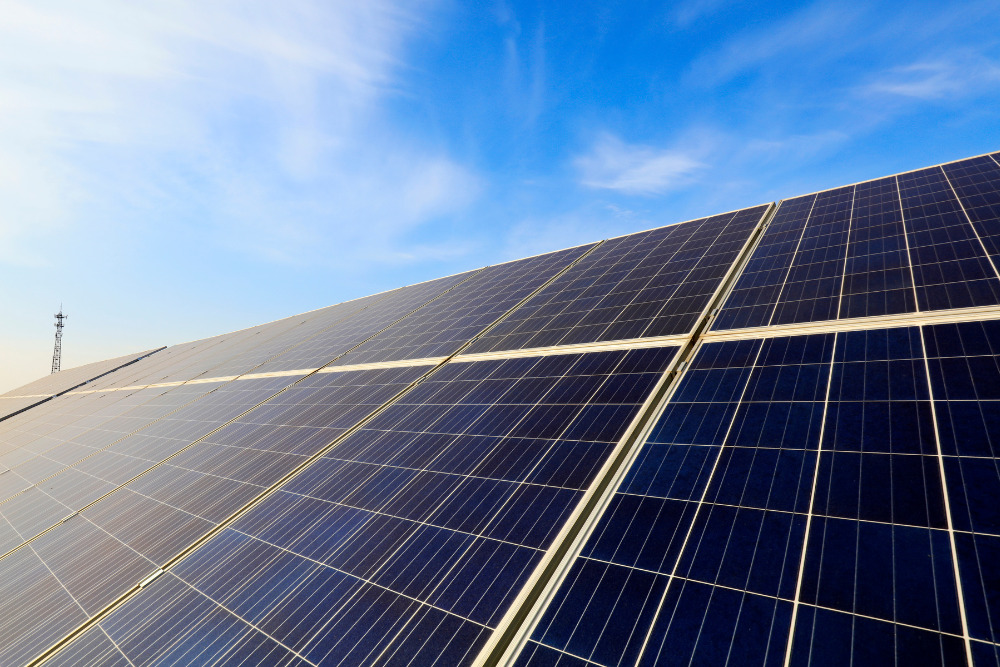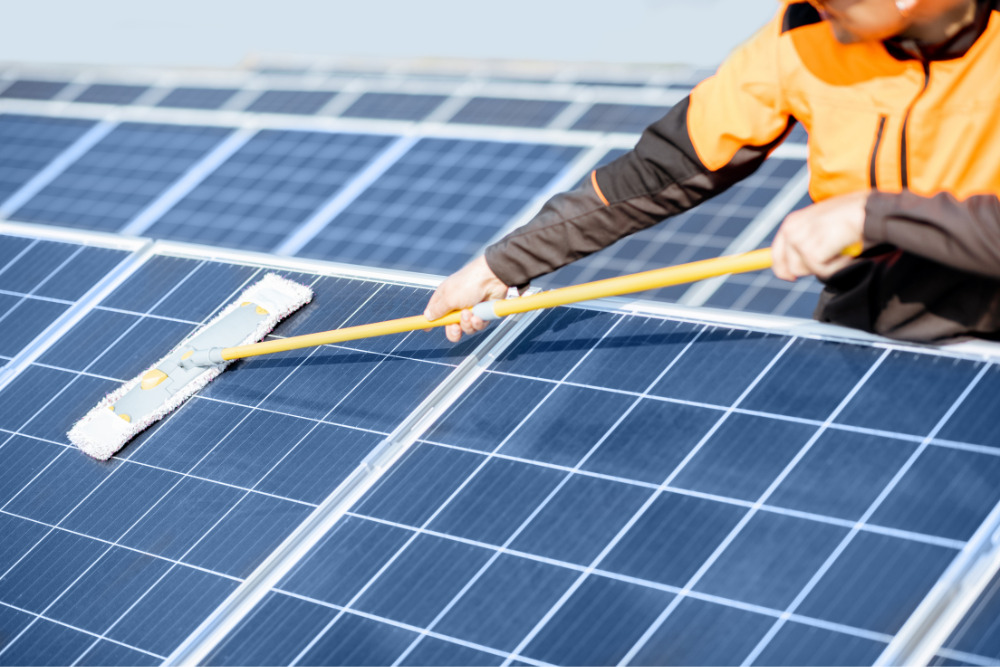
Commercial solar panels can last for 25-30 years, though some of the first solar panels are still in commission more than 40 years later. The lifespan of a solar panel depends on the type of the panel, climate, and how well it’s maintained.
When investing in a commercial solar energy system, one of the biggest questions business owners have is, “How long do solar panels last?”
The lifespan of the photovoltaic (PV system) solar panels is an important consideration. The frequency of replacement contributes not only to the overall cost of the system and its maintenance but also to the convenience of use.
What Affects The Lifespan Of Commercial Solar Panels?
There are several factors that affect the longevity of commercial solar panels, such as:
- Quality of materials. High-quality materials like tempered glass and durable frames can help ensure panels last longer.
- Solar cell technology. Monocrystalline solar panels last longer than polycrystalline panels.
- Installation process. Proper solar panel installation is crucial for preventing damage to the panels and ensuring the correct position for maximum efficiency.
- Manufacturing process. There have been many advancements by solar panel manufacturers over the past couple decades. These improvements have led to more efficient and durable products that increase the lifespan of solar panels.
- Daily environmental conditions. Extreme high or low temperatures, harsh weather conditions like hail or high winds, or humidity can all make solar panels degrade more quickly.
According to industry experts, however, the average life expectancy for commercial solar panels tends to be 25-30 years. This estimation assumes regular maintenance and cleaning, which extends the lifespan of solar panels.

What Are The Longest-Lasting Commercial Solar Panels?
Determining the longest-lasting commercial solar panels can be challenging because longevity can depend on various external factors.
Considerations for longevity include:
- Solar cell technology
- Manufacturer
- Installation
- Maintenance
Some manufacturers, however, are known for producing solar panels with a reputation for durability and longevity. These include:
SunPower
SunPower is a well-known manufacturer producing high-efficiency solar panels. They are known for their advanced cell technology and robust construction, which contribute to their panels’ longevity. SunPower panels often have extensive warranties, such as a 25-year power output warranty.
LG
LG is another reputable manufacturer that produces solar panels focusing on quality and durability. Their panels are known for their high efficiency and solid construction. LG also offers warranties ranging from 25 to 25+ years, depending on the model.
Panasonic
Panasonic is a well-known electronics company that’s entered the solar panel market. Their panels are known for their high efficiency and long-term performance. Panasonic offers warranties ranging from 25 to 25+ years, depending on the model.
It’s important to note that solar panel technology is constantly evolving, and new advancements are being made. Therefore, it’s advisable to research the latest offerings and consult with reputable installers or manufacturers for the most up-to-date information on the longevity and performance of their panels.
How To Maintain Solar Panels To Extend Their Lifespan
When maximizing the life of your solar panels, a little maintenance goes a long way.
To maintain solar panels and extend their lifespan, follow some key maintenance tips:
- Keep them clean. Keep the solar panels clean by removing debris, leaves, or bird droppings that may accumulate on the surface. This can be done with a soft brush or a low-pressure hose. Avoid using abrasive materials or high-pressure water, which can damage the panels. Since most commercial solar arrays are quite large, this is usually a job for professionals once or twice a year.
- Conduct regular damage checks. Periodically inspect the solar panels for any signs of damage, such as cracks, scratches, or loose connections.
- Inspect the racking system. Ensure that the mounting system is secure and stable. Over time, vibrations or extreme weather conditions can cause the mounts to loosen. Tighten any loose bolts or screws, and consult a professional for assistance if necessary.
- Monitor performance. Keep track of the solar panel’s performance by monitoring the energy production. Most solar panel systems come with monitoring software that provides real-time data on energy generation. If you notice a significant drop from the original output, it could indicate a problem that requires attention.
- Trim nearby trees. If tree branches or plants cast shadows on your solar panels, consider trimming them to prevent shading and potential damage.
- Clear snow accumulation. If you live in an area with snowy winters, clear snow from the panels using a soft brush or a snow rake with a non-abrasive head.
- Schedule professional maintenance checks. Having your solar panels professionally inspected every few years is a good idea. These inspections can identify any underlying issues or potential problems that may affect the performance and longevity of the system.

Remember to refer to the manufacturer’s guidelines and recommendations for specific maintenance requirements for your solar panels. Following these maintenance practices will help you maximize the lifespan and efficiency of your solar panel system.
How To Know It’s Time To Replace Your Solar Panels
Solar panels are designed to be durable and long-lasting, but like any other technology, they will eventually need replacing. When it comes to replacements and upgrades, there are several considerations:
- Age. Most commercial solar panels last 25-30 years or longer. Old panels don’t necessarily have to be replaced unless they fail or are underperforming. But as your system approaches this age, it’s wise to start planning for replacement in the coming years as part of your capital improvement plan.
- Declining performance. The typical solar panel degradation rate is 0.5% to 0.8% per year. This means that after 25 years, the panels would still retain around 85% to 88% of their original power output. If your panels are approaching or have exceeded this time frame, and they’re not meeting your energy needs, it’s worth considering a replacement.
- Damage. Physical damage to any of the modules or moving parts can be a reason for replacement. This can include cracks, chips, delamination, or corrosion. If the damage is extensive or affecting the panel’s performance, replacement may be necessary.
- Warranty expiration. Most solar companies offer a warranty that guarantees the performance of their product for a certain number of years. If your panels are out of warranty and experiencing issues, it may be a good time to consider replacing them.
- Technological advances. Solar technology continues to advance rapidly. Your current panels may become outdated or new, more efficient models may be available. In these cases, upgrading to take advantage of the latest technology may benefit energy production and keep electricity bills low.
- Maintenance problems. If you find yourself constantly dealing with maintenance issues or frequent repairs on your solar panels, it might be a sign that they are reaching the end of their lifespan.
- Change in your energy needs. If your energy requirements have increased since the initial installation of your solar panels and the existing system is no longer meeting your needs, it may be time to upgrade or expand your system.
When considering whether to replace your solar panels, it’s advisable to consult with a professional solar installer with several years of experience. They can assess the condition of your panels, evaluate their performance, and provide expert advice on the best course of action.
How Long Does It Take For Commercial Solar Panels To Pay For Themselves?
The time it takes for commercial solar panels to pay for themselves, known as the payback period, can vary depending on several factors:
- Initial cost. The upfront cost of installing solar panels is a significant factor. The cost includes the panels themselves, solar batteries, solar inverters, installation expenses, permits, and any additional equipment needed.
- Energy consumption. The amount of energy consumed plays a crucial role. The higher your energy usage, the more savings you can achieve over a shorter time period with solar panels.
- Size. The size and capacity of the solar system you install impacts how much electricity it can generate. A more extensive system can produce more electricity, leading to more significant savings.
- Sunlight availability. The sunlight your location receives affects the solar panel system’s energy production. Regions with abundant sunlight can generate more electricity, resulting in quicker payback periods.
- Electricity rates. The grid's electricity cost is a significant factor in determining the payback period. Higher electricity rates mean that solar panels can provide greater savings, shortening the payback time.
- Federal tax credits and incentives. These perks to going solar can help offset the cost of your system and shorten payback time.
On average, commercial solar panels tend to have a payback period ranging from 5 to 10 years. However, it’s important to note that there is no industry standard for the payback time frame, and this is a rough estimate. The actual payback period will be influenced by the factors mentioned above.


